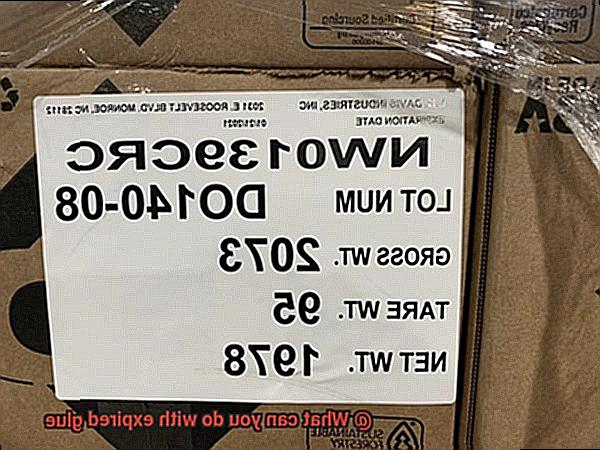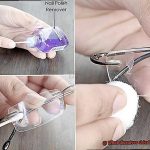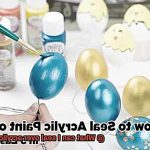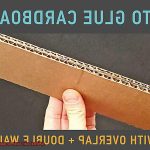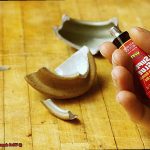Tired of tossing expired glue bottles? Don’t let them go to waste just yet.
Get ready to uncover some seriously cool and unexpected ways to use expired glue. Sure, it may not be great for sticking anymore, but that doesn’t mean it’s useless.
With a little imagination, you can transform it into all sorts of awesome projects. Whether you’re a crafty guru or just love finding clever solutions, expired glue might just become your secret weapon.
Let’s unleash your imagination and discover the surprising uses for this often-overlooked crafting material.
What is Expired Glue?
Contents
Expired glue refers to adhesive products that have surpassed their recommended shelf life and are no longer considered effective or reliable for use. Glue, like any other product, has a limited lifespan, and using it beyond its expiration date can lead to poor bonding, weak adhesion, and overall unsatisfactory results.
Glue is composed of various chemicals that undergo a specific chemical reaction to create a strong bond between surfaces. However, over time, these chemicals can degrade or break down, rendering the glue less effective. Factors such as exposure to heat, moisture, or air can accelerate this degradation process.
Visibly, expired glue may exhibit signs of deterioration. Changes in color, texture, or consistency can occur. It may become thicker, clumpy, or develop a foul odor. These are indicators that the glue has chemically deteriorated and may no longer have its original adhesive properties.
Using expired glue can have negative consequences. It may not adhere properly or may not bond at all when attempting to bond materials together. This can result in weakened structures, failed repairs, or compromised projects. Additionally, expired glue might not provide a durable and long-lasting bond, leading to frequent repairs or reapplications.
It is important to note that using expired glue is not only inefficient but also potentially unsafe. Relying on expired glue for projects involving structural integrity or safety requirements can pose serious risks. Unstable joints or connections could lead to accidents or injuries.
Creative Uses for Expired Glue
Expired glue may have lost its adhesive powers, but that doesn’t mean it’s completely worthless. In fact, expired glue can be repurposed in a variety of creative and exciting ways. Whether you’re an art enthusiast, a DIY lover, or an educator, expired glue can become a versatile tool for unleashing your imagination. In this article, we will explore a range of innovative uses for expired glue that will ignite your creativity and inspire you to think outside the box.
Arts and Crafts:
- Adding texture to artwork: Spread expired glue on canvas or paper before painting over it. As it dries, it creates captivating textures that add depth and visual interest to your masterpiece.
- Homemade stickers: Apply the glue onto wax paper or a non-stick surface, let it dry, and cut out unique shapes or designs. Decorate notebooks, jars, or any other surfaces with these one-of-a-kind homemade stickers.
- Mixed-media collages: Expired glue’s thick consistency makes it perfect for adhering heavier materials like fabric or wood to a surface. Use it as an adhesive in mixed-media collages to create stunning and multidimensional effects.
- Unleash your creativity with textured surfaces: Apply a thick layer of expired glue onto a surface and let it partially dry to create captivating textures that can be further embellished with paint or other materials.
DIY Home Decor:
- Temporary repairs: While not as strong as fresh glue, expired glue can serve as a temporary fix for broken toys or loose parts until a more permanent solution is found.
- Homemade slime: Transform expired glue into the base for homemade slime. Add water and other ingredients to create a fun sensory material that will captivate both kids and adults alike.
Educational Settings:
- Explore art through papier-mâché projects: Teachers can use expired glue for hands-on art activities like papier-mâché, allowing students to unleash their creativity while learning about different materials.
- Homemade playdough: Combine expired glue with other ingredients to create homemade playdough, providing children with an engaging sensory experience that promotes fine motor skill development.
- Spark curiosity with chemical reactions: Demonstrate chemical reactions by combining expired glue with other substances, igniting curiosity and deepening students’ understanding.

Household Repairs with Expired Glue
Well, don’t toss it just yet. Expired glue can still be useful for various household repairs, although its effectiveness may be reduced. Let’s dive into how you can make the most out of your expired glue and the precautions you should take.
First and foremost, let’s talk about minor repairs. If you have loose chair legs or small cracks in wooden furniture, expired glue can provide a temporary solution. However, keep in mind that its bonding strength may not be as strong as fresh glue. To ensure durability, regularly check and reinforce the repaired areas.

But it doesn’t stop there. Expired glue can also come in handy for repairing ceramic or porcelain items such as mugs or decorative pieces. Just make sure that the adhesive is non-toxic and safe for use with food or drink containers.
Now, let’s talk safety. When using expired glue for repairs, always follow the manufacturer’s instructions and safety guidelines. Wear protective gloves and ensure proper ventilation in your workspace to prevent any potential health hazards.
But like anything else, expired glue does have its limitations. Keep in mind that it may not be suitable for certain repairs that require a strong and long-lasting bond. Heavy-duty items like metal or glass might require fresh glue with optimal adhesive properties.
Before using expired glue, inspect its quality. Look out for changes in consistency, color, or odor that could indicate degradation. If the glue appears significantly altered, it’s best to discard it and use fresh adhesive instead.
But don’t despair. Expired glue can also be repurposed for various craft projects or DIY activities around the house. Use it as a temporary adhesive for creating collages, attaching lightweight decorations, or securing paper-based crafts.
When repurposing expired glue for crafts, consider the specific requirements of your project and assess whether the reduced bonding strength of the expired glue will suffice. You may need to reinforce or seal the glued items using additional materials or techniques.
Remember, prevention is always better than relying on expired glue for household repairs. Regularly check the expiration dates of glues and other adhesives and replace them when necessary to ensure optimal performance and safety.
Temporary Adhesion with Expired Glue
Expired glue may not be as effective as fresh glue, but it can still serve a purpose in certain situations. Before using expired glue for temporary adhesion, it’s important to check its quality. Look for any signs of separation, discoloration, or changes in texture. If the glue appears significantly degraded or altered, it’s best to discard it and obtain fresh adhesive.
Once you’ve determined that the expired glue is still usable, there are several ways you can make the most out of it for temporary adhesion:
- Non-permanent craft projects: Expired glue can be used for temporary bonding in art and craft projects. Whether you’re working on a collage, assembling a prototype, or creating a temporary structure, expired glue can hold materials together until you’re ready for final arrangements or until you can get fresh glue.
- Lightweight decorations: If you need to temporarily attach lightweight items like posters, artwork, or decorations, expired glue can come in handy. It may not provide a long-lasting bond, but it can hold these items in place until you’re ready to remove them.
- Temporary repairs: Expired glue can be used for minor household repairs that require a temporary fix. For example, if you have a loose handle on a drawer or a small crack in a plastic item, applying some expired glue can hold it together until you have the time or resources for a permanent solution.
Remember, while expired glue can still have some temporary adhesion capabilities, its reliability and strength may be compromised. It’s important to monitor the bond and consider a more permanent solution for critical or long-lasting applications.
Educational Uses of Expired Glue
Educational materials play a crucial role in promoting learning and creativity among students. While expired glue may no longer be suitable for regular use, it can still serve a purpose in educational settings. Finding innovative ways to repurpose expired glue can provide unique opportunities for learning and engagement.
Expired glue can be used in various science experiments to teach students about different scientific concepts. For example, it can be used to demonstrate viscosity by comparing the flow of fresh glue with that of expired glue. It can also be used to create non-Newtonian fluids, such as oobleck, by mixing it with other substances like cornstarch or water. These experiments help students understand properties of materials and engage them in hands-on learning experiences.
In arts and crafts projects, expired glue can still be utilized, allowing students to explore their creativity while learning. It can be used for collage-making, where students stick various materials onto a base using the expired glue. Additionally, it can be mixed with food coloring or paint to create unique textures and effects in artworks. Encouraging students to experiment with expired glue fosters their artistic skills and encourages resourcefulness.
Expired glue can also be incorporated into STEM (science, technology, engineering, and mathematics) projects. It can be used as an adhesive for building models or prototypes, allowing students to apply engineering principles. Students can use expired glue to construct bridges or towers using popsicle sticks or other materials, testing their strength and stability. Such projects promote critical thinking, problem-solving, and teamwork among students.
Furthermore, expired glue offers an opportunity to teach students about environmental awareness and sustainability. Students can learn about the impact of waste on the environment by repurposing expired glue instead of throwing it away. Teachers can organize recycling programs where students collect expired glue and use it in various educational projects. This instills a sense of responsibility towards the environment and encourages students to find creative solutions to reduce waste.
Expired glue can also be employed in bookbinding activities or paper projects with students. It can be used to bind loose pages together, creating handmade books or journals. Students can also use expired glue for paper mache, allowing them to create three-dimensional artworks or sculptures. These projects enhance fine motor skills, encourage writing and creativity, and provide a tactile learning experience.
While utilizing expired glue in educational activities, it is essential to prioritize safety. Educators should ensure that the expired glue is non-toxic and safe for children to handle. It is recommended to test a small amount of expired glue before using it extensively, as its adhesive properties may have diminished over time. Proper ventilation and supervision should be maintained during any activity involving expired glue.
Other Practical Uses of Expired Glue
It may not be fit for its original purpose anymore, but that doesn’t mean it’s completely useless. In fact, expired glue can still prove to be a practical and creative solution for various tasks. Whether you’re in need of a temporary adhesive, a sealant, or even a decorative tool, expired glue has got your back. So let’s dive into the world of other practical uses of expired glue.
- Temporary Adhesive: While expired glue may lack the strength of fresh glue, it can still come to the rescue when you need a quick fix. Whether it’s securing a wobbly piece of furniture or mending a broken item until you find the perfect solution, expired glue can provide a handy temporary hold.
- Sealant: Got cracks or gaps in surfaces? Expired glue can be your secret weapon. Use it to seal leaks or drafts in your DIY projects that require a temporary fix.
- Non-Structural Bonding Agent: If you’re into arts and crafts projects, collages, or scrapbooking, expired glue can be your new best friend. Its adhesive strength may not be crucial in these cases, making it an ideal choice for sticking paper together.
- Decorative Effects: Time to get artsy. Expired glue can unleash your creativity by helping you create textured effects on surfaces. Apply it to walls or furniture and let your imagination run wild as you manipulate it with various tools to achieve unique patterns and textures.
- Woodworking: Expired glue may not offer the same level of adhesion as fresh glue, but it can still work wonders in non-structural woodworking projects. Fill gaps or cracks in wood surfaces to enhance both appearance and durability.
- DIY Slime-Making: Calling all slime enthusiasts. Yes, even expired glue can play a role in this gooey delight. It can serve as a key ingredient, providing that sticky and stretchy texture that everyone loves. So gather your ingredients and whip up some slimy fun.
- Educational Tool: Teachers and parents, listen up. Expired glue can be a valuable resource for science experiments or demonstrations. Show the properties of adhesion or create homemade glue from natural ingredients using expired glue as a teaching tool.
Checking the Condition of Expired Glue
Checking the condition of expired glue is crucial to ensure the success of your projects. Using old or ineffective glue can lead to poor adhesion and project failure. By following these steps, you can assess the condition of expired glue and make an informed decision about its usability.
First, examine the appearance of the glue. Check the color, consistency, and clarity. If the glue has changed in color and appears yellowed or discolored, it may be a sign of degradation. Additionally, if the glue has thickened or contains lumps or separation, it is likely no longer suitable for use.
Next, perform an adhesive test. Apply a small amount of the expired glue onto a test surface and allow it to dry according to the recommended drying time. After drying, try bonding two test surfaces together using the dried glue. If the bond is weak or easily breaks apart, it indicates that the glue has lost its effectiveness.
Consider the smell of the expired glue as well. If it emits a strong or unpleasant odor, it could be an indication of degradation or chemical breakdown. Such glue should be discarded as it may not provide a reliable bond.
It is also important to check the manufacturer’s recommendations for specific information regarding the shelf life of different glues. Different types of glues have varying shelf lives. Some types, like epoxy adhesives, may have a longer shelf life compared to others.
Proper storage is key to extending the shelf life and maintaining the effectiveness of glue. Keep glue containers tightly sealed when not in use and store them in a cool, dry place away from direct sunlight or extreme temperatures.
Recycling Options for Excess Expired Glue
When it comes to expired glue, recycling options may not be as straightforward as simply tossing it in the recycling bin. Here are some alternative options for responsibly disposing of excess expired glue with minimal environmental impact:
- Local Facilities or Organizations: Check if there are any local facilities or organizations that accept specific types of glue for recycling. Some places may accept certain types of adhesive products like cyanoacrylate (super glue) or polyurethane glue for recycling. Contact your local recycling center or waste management facility to inquire about their policies.
- Specialized Recycling Programs or Events: Look out for specialized recycling programs or events in your area that accept expired glue. These programs may have specific guidelines on what types of glue they accept and how to properly prepare and dispose of it. Keep an eye on community bulletin boards, websites, or social media platforms for announcements.
- Manufacturer Recycling Programs: Some manufacturers or distributors of glue may have their own recycling programs in place. Reach out to the brand or company that produced the expired glue to see if they offer any recycling options. They may have take-back programs or instructions on how to recycle their specific product.
- Repurposing and Reusing: If recycling options are limited, consider repurposing or reusing the expired glue. Use it for crafts or DIY projects where adhesive strength may not be critical. However, carefully assess the quality and performance of the expired glue before using it in any important applications.
- Proper Disposal: Certain types of glues, especially those containing hazardous chemicals, require special handling and disposal methods. Check with your local waste management facility or environmental agency for guidance on how to properly dispose of such glues. They can provide information on hazardous waste collection days or drop-off locations.
ifcwvElwlrA” >
Conclusion
In conclusion, expired glue may no longer be fit for its original adhesive purpose, but that doesn’t mean it’s destined for the trash bin. There are countless imaginative and practical ways to breathe new life into expired glue and maximize its potential.
From an artistic perspective, expired glue can inject texture and dimension into artwork, fabricate homemade stickers or mixed-media collages, and even fashion textured surfaces that demand attention. In the realm of DIY home decor projects, expired glue can act as a temporary fix for minor repairs or be transformed into homemade slime for sensory indulgence.
Educational environments can also benefit from the utilization of expired glue. It can play a pivotal role in various science experiments that teach students about viscosity and chemical reactions. Moreover, it can seamlessly integrate into arts and crafts projects, STEM activities, and bookbinding exercises to elevate the learning experience.
When it comes to household repairs, expired glue still holds some merit. It can serve as a stopgap solution for loose furniture or cracks in ceramic items. However, it’s worth noting that its bonding strength might not match that of fresh glue.
Before repurposing expired glue for any task, it is vital to assess its condition by scrutinizing its appearance, conducting an adhesive test, and taking note of any changes in odor. Proper storage practices are equally crucial to extend the shelf life of your glue.
If recycling options exist in your locality, consider responsibly disposing of excess expired glue through local facilities or specialized recycling programs. Alternatively, you can repurpose or reuse the glue for craft projects or dispose of it following local waste management guidelines.
So don’t let those forgotten bottles of expired glue go to waste just yet.

